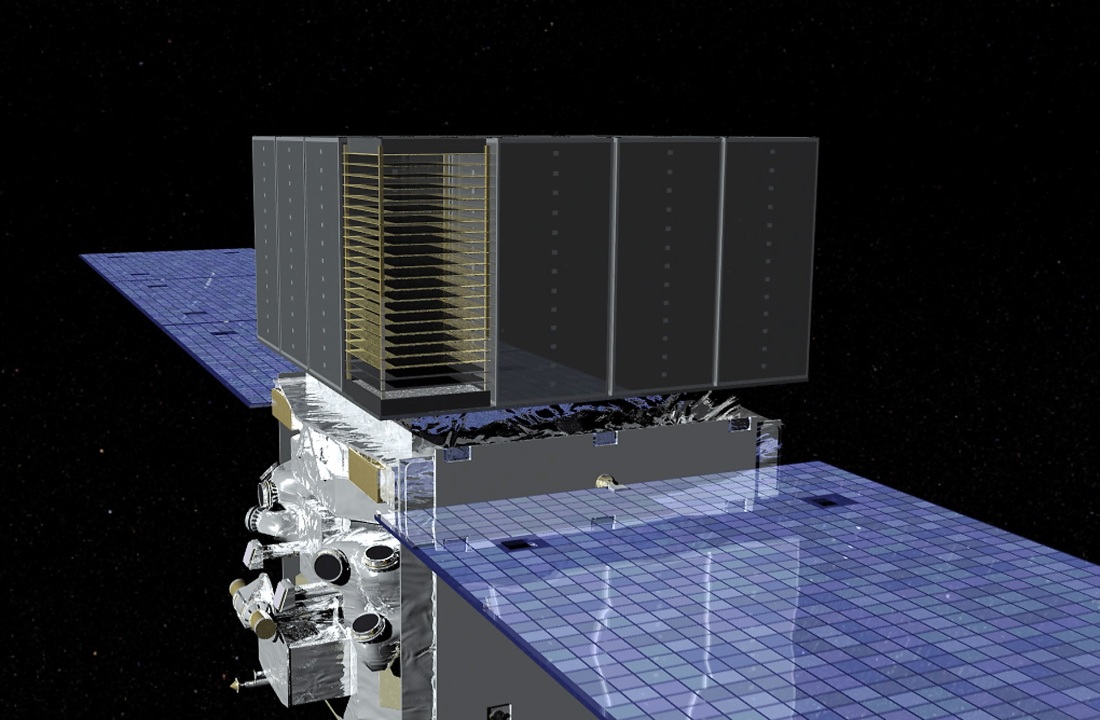
Apr 7, 2022
By Jeanette Kazmierczak
jeanette.a.kazmierczak@nasa.gov
NASA’s Goddard Space Flight Center, Greenbelt, Md
Media Contact:
Claire Andreoli
claire.andreoli@nasa.gov
NASA’s Goddard Space Flight Center, Greenbelt, Md

Black holes distort a starry background, capture light, and produce black hole silhouettes in this simulation. Each has a mass about 500,0000 times the Sun’s and a distinctive feature called a photon ring outlining the black hole. Credit: NASA’s Goddard Space Flight Center; background, The European Space Agency [La Agencia Espacial Europea] [Agence spatiale européenne][Europäische Weltraumorganisation](EU) Gaia/ESA DPAC Consortium – Gaia – Cosmos [Data Processing and Analysis Consortium] (EU).

Our universe is a chaotic sea of ripples in space-time called gravitational waves. Astronomers think waves from orbiting pairs of supermassive black holes in distant galaxies are light-years long and have been trying to observe them for decades, and now they’re one step closer thanks to NASA’s Fermi Gamma-ray Space Telescope [below].
Fermi detects gamma rays, the highest-energy form of light. An international team of scientists examined over a decade of Fermi data collected from pulsars, rapidly rotating cores of stars that exploded as supernovae.

They looked for slight variations in the arrival time of gamma rays from these pulsars, changes which could have been caused by the light passing through gravitational waves on the way to Earth. But they didn’t find any.
While no waves were detected, the analysis shows that, with more observations, these waves may be within Fermi’s reach.
“We kind of surprised ourselves when we discovered Fermi could help us hunt for long gravitational waves,” said Matthew Kerr, a research physicist at the U.S. Naval Research Laboratory in Washington. “It’s new to the fray – radio studies have been doing similar searches for years. But Fermi and gamma rays have some special characteristics that together make them a very powerful tool in this investigation.”
The results of the study, co-led by Kerr and Aditya Parthasarathy, a researcher at The MPG Institute for Radio Astronomy [MPG Institut für Radioastronomie](DE), were published online by the journal Science on April 7, 2022.

The length of a gravitational wave, or ripple in space-time, depends on its source, as shown in this infographic. Scientists need different kinds of detectors to study as much of the spectrum as possible. Credits: NASA’s Goddard Space Flight Center Conceptual Image Lab.
When massive objects accelerate, they produce gravitational waves traveling at light speed. The ground-based Laser Interferometer Gravitational Wave Observatory – which first detected gravitational waves in 2015 – can sense ripples tens to hundreds of miles long from crest to crest, which roll past Earth in just fractions of a second. The upcoming space-based Laser Interferometer Space Antenna will pick up waves millions to billions of miles long.

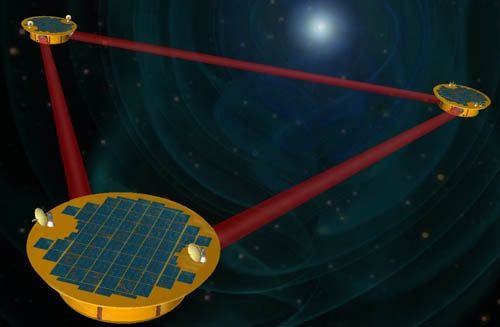
_____________________________________________________________________________________
LIGO–VIRGO–KAGRA
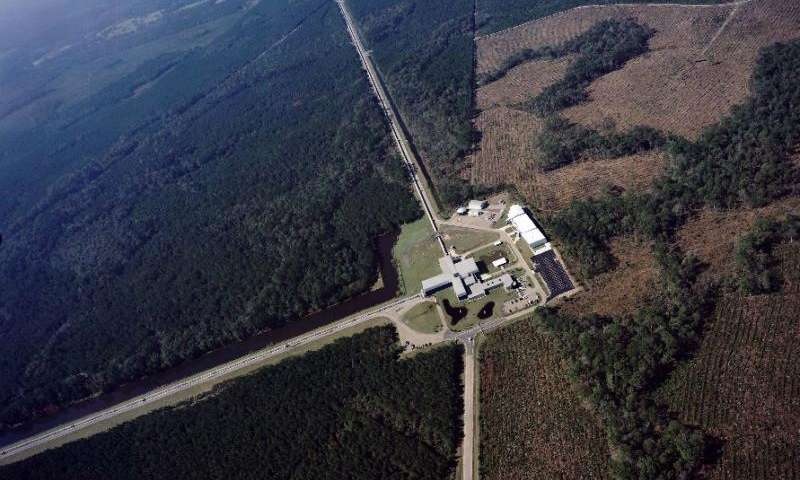 Caltech/MIT Advanced aLigo detector installation Livingston, LA, USA.
Caltech/MIT Advanced aLigo detector installation Livingston, LA, USA.
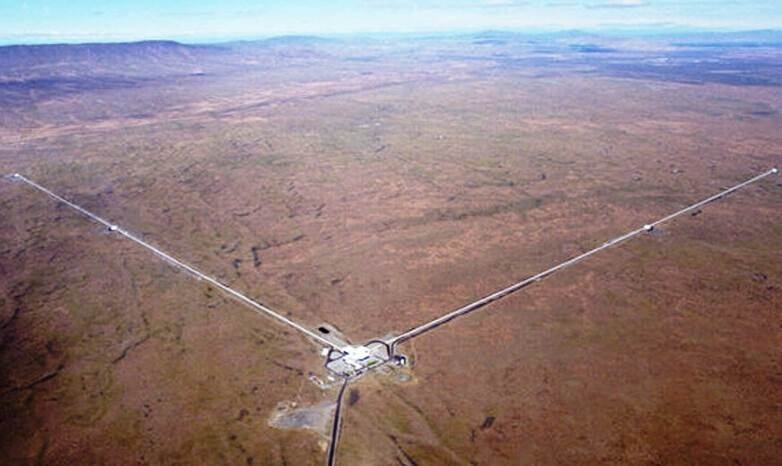 Caltech/MIT Advanced aLigo Hanford, WA, USA installation.
Caltech/MIT Advanced aLigo Hanford, WA, USA installation.
 VIRGO Gravitational Wave interferometer, near Pisa, Italy.
VIRGO Gravitational Wave interferometer, near Pisa, Italy.
 KAGRA Large-scale Cryogenic Gravitational Wave Telescope Project (JP).
KAGRA Large-scale Cryogenic Gravitational Wave Telescope Project (JP).
_____________________________________________________________________________________
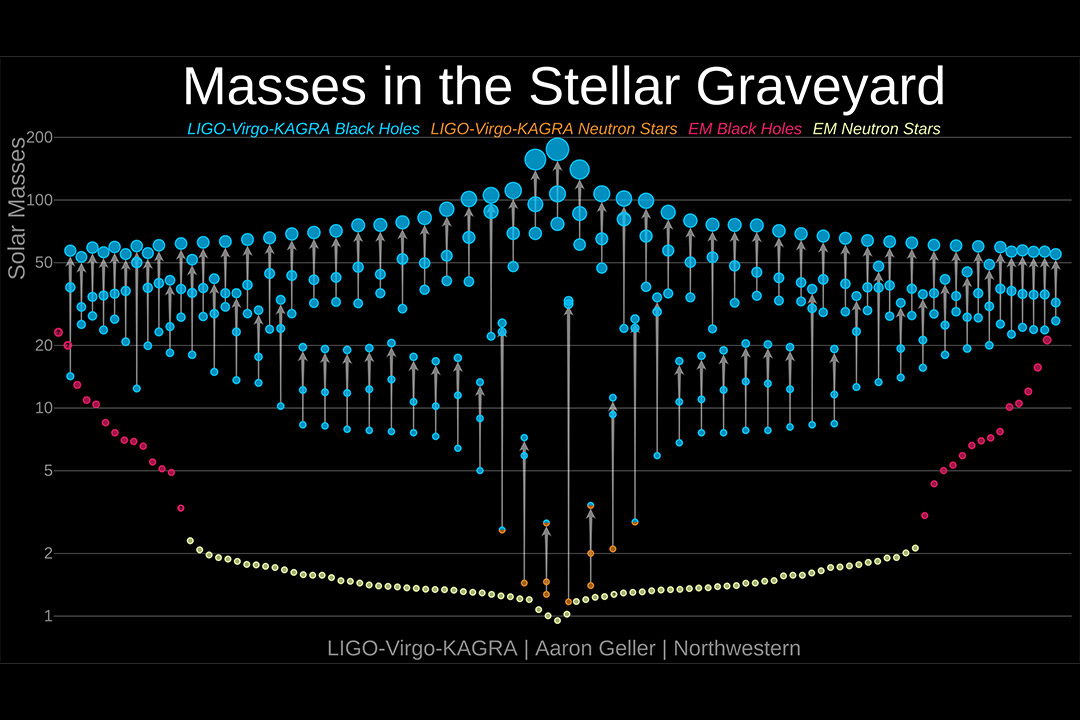 LIGO Virgo Kagra Masses in the Stellar Graveyard. Credit: Frank Elavsky and Aaron Geller at Northwestern University.
LIGO Virgo Kagra Masses in the Stellar Graveyard. Credit: Frank Elavsky and Aaron Geller at Northwestern University.
Kerr and his team are searching for waves that are light-years, or trillions of miles, long and take years to pass Earth. These long ripples are part of the gravitational wave background, a random sea of waves generated in part by pairs of supermassive black holes in the centers of merged galaxies across the universe.
To find them, scientists need galaxy-sized detectors called pulsar timing arrays. These arrays use specific sets of millisecond pulsars, which rotate as fast as blender blades. Millisecond pulsars sweep beams of radiation, from radio to gamma rays, past our line of sight, appearing to pulse with incredible regularity – like cosmic clocks.
As long gravitational waves pass between one of these pulsars and Earth, they delay or advance the light arrival time by billionths of a second. By looking for a specific pattern of pulse variations among pulsars of an array, scientists expect they can reveal gravitational waves rolling past them.
Radio astronomers have been using pulsar timing arrays for decades, and their observations are the most sensitive to these gravitational waves. But interstellar effects complicate the analysis of radio data. Space is speckled with stray electrons. Across light-years, their effects combine to bend the trajectory of radio waves. This alters the arrival times of pulses at different frequencies. Gamma rays don’t suffer from these complications, providing both a complementary probe and an independent confirmation of the radio results.
“The Fermi results are already 30% as good as the radio pulsar timing arrays when it comes to potentially detecting the gravitational wave background,” Parthasarathy said. “With another five years of pulsar data collection and analysis, it’ll be equally capable with the added bonus of not having to worry about all those stray electrons.”
Within the next decade, both radio and gamma-ray astronomers expect to reach sensitivities that will allow them to pick up gravitational waves from orbiting pairs of monster black holes.
“Fermi’s unprecedented ability to precisely time the arrival of gamma rays and its wide field of view make this measurement possible,” said Judith Racusin, Fermi deputy project scientist at NASA’s Goddard Space Flight Center in Greenbelt, Maryland. “Since it launched, the mission has consistently surprised us with new information about the gamma-ray sky. We’re all looking forward to the next amazing discovery.”
The Fermi Gamma-ray Space Telescope is an astrophysics and particle physics partnership managed by Goddard. Fermi was developed in collaboration with the U.S. Department of Energy, with important contributions from academic institutions and partners in France, Germany, Italy, Japan, Sweden, and the United States.
See the full article here .

five-ways-keep-your-child-safe-school-shootings
Please help promote STEM in your local schools.
The Fermi Gamma-ray Space Telescope, formerly referred to as the Gamma-ray Large Area Space Telescope (GLAST), is a space observatory being used to perform gamma-ray astronomy observations from low Earth orbit. Its main instrument is the Large Area Telescope (LAT), with which astronomers mostly intend to perform an all-sky survey studying astrophysical and cosmological phenomena such as active galactic nuclei, pulsars, other high-energy sources and dark matter. Another instrument aboard Fermi, the Gamma-ray Burst Monitor (GBM; formerly GLAST Burst Monitor), is being used to study gamma-ray bursts. The mission is a joint venture of NASA, the United States Department of Energy, and government agencies in France, Germany, Italy, Japan, and Sweden.
The National Aeronautics and Space Administration (NASA) is the agency of the United States government that is responsible for the nation’s civilian space program and for aeronautics and aerospace research.
President Dwight D. Eisenhower established the National Aeronautics and Space Administration (NASA) in 1958 with a distinctly civilian (rather than military) orientation encouraging peaceful applications in space science. The National Aeronautics and Space Act was passed on July 29, 1958, disestablishing NASA’s predecessor, the National Advisory Committee for Aeronautics (NACA). The new agency became operational on October 1, 1958.
Since that time, most U.S. space exploration efforts have been led by NASA, including the Apollo moon-landing missions, the Skylab space station, and later the Space Shuttle. Currently, NASA is supporting the International Space Station and is overseeing the development of the Orion Multi-Purpose Crew Vehicle and Commercial Crew vehicles. The agency is also responsible for the Launch Services Program (LSP) which provides oversight of launch operations and countdown management for unmanned NASA launches. Most recently, NASA announced a new Space Launch System that it said would take the agency’s astronauts farther into space than ever before and lay the cornerstone for future human space exploration efforts by the U.S.
NASA science is focused on better understanding Earth through the Earth Observing System, advancing heliophysics through the efforts of the Science Mission Directorate’s Heliophysics Research Program, exploring bodies throughout the Solar System with advanced robotic missions such as New Horizons, and researching astrophysics topics, such as the Big Bang, through the Great Observatories [NASA/ESA Hubble, NASA Chandra, NASA Spitzer, and associated programs.] NASA shares data with various national and international organizations such as from [JAXA]Greenhouse Gases Observing Satellite.

